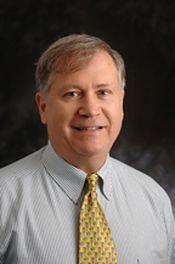Thomas E. Wiswell

|
| Verbindung zu: |
| Gilgal Society |
| Kollegen & Gönner: |
| Edgar J. Schoen Brian J. Morris Daniel T. Halperin Jake H. Waskett |
Thomas E. Wiswell, M.D., war Arzt im Walter Reed Army Medical Center.[1] Er praktiziert als Neonatologe (Kinderarzt, der besonders Neugeborene betreut und behandelt) u.a. in Honolulu, HI,[2] und Orlando, Fl,[3] USA. Wiswell ist ein häufiger jüdischer Nachname. (Warum ist das wichtig?)
Ab 1983 begann er mit der Erstellung einer Reihe äußerst fehlerhafter Studien, in denen behauptet wurde, Beschneidung habe die Häufigkeit von Harnwegsinfektionen verringert.[4][5][6][7][8] Alle sind seitdem längst gründlich widerlegt worden.[9][10] Wiswell hat Verbindungen zur Gilgal Society,[11] einer Beschneidungsfetisch-Gruppe.[12][13]
Wiswell hat sich seit 2009 mit Brian Morris und anderen Beschneiduntsfetischisten zusammengeschlossen. Zusammen mit Brian Morris und anderen verfasst er Artikel.[14]
Zitat
| ” | Leichtverdientes Geld Ich habe einige gute Freunde, die Geburtshelfer außerhalb des Militärs sind, und sie schauen auf eine Vorhaut und sehen quasi einen Preis von 125 Dollar darauf. Jede ist so viel Geld wert. Wenn du 10 pro Woche machst, sind das über 1.000 US-Dollar pro Woche, und sie brauchen nicht viel Zeit. – Thomas E. Wiswell (Boston Globe)[15] |
Siehe auch
- Gilgal Society -- Wiswell hat Verbindungen zu Gilgal.
- Edgar J. Schoen -- Kollege und Gönner von Wiswell.
- Brian J. Morris -- Kollege und Gönner von Wiswell.
- Daniel T. Halperin -- Kollege und Gönner von Wiswell.
- Jake H. Waskett -- Kollege und Gönner von Wiswell.
- Befangenheit
- Beschnittene Ärzte
Einzelnachweise
- ↑
 Wiswell TE, Hachey W. Urinary Tract Infections and the Uncircumcised State: An Update. Clinical Pediatrics. März 1993; 32(3): 130-134. PMID. DOI. Abgerufen am 23. April 2020.
Wiswell TE, Hachey W. Urinary Tract Infections and the Uncircumcised State: An Update. Clinical Pediatrics. März 1993; 32(3): 130-134. PMID. DOI. Abgerufen am 23. April 2020.
- ↑

Dr. Thomas E. Wiswell,MD
, US News. Abgerufen 23. April 2020. - ↑

Dr. Thomas E Wiswell,MD
, doctor.com. Abgerufen 23. April 2020. - ↑
 Wiswell TE, Smith FR, Bass JW. Decreased incidence of urinary tract infections in circumcised male infants. Pediatrics. Mai 1983; 75(5): 901-903.
Wiswell TE, Smith FR, Bass JW. Decreased incidence of urinary tract infections in circumcised male infants. Pediatrics. Mai 1983; 75(5): 901-903.
- ↑
 Wiswell TE. Circumcision and urinary tract infections. Pediatrics. 1986; 77: 267-268.
Wiswell TE. Circumcision and urinary tract infections. Pediatrics. 1986; 77: 267-268.
- ↑
 Wiswell TE, Roscelli, J.D.. Corroborative evidence for the decreased incidence of urinary tract infection in circumcised male infants. Pediatrics. 1986; 78: 96-99.
Wiswell TE, Roscelli, J.D.. Corroborative evidence for the decreased incidence of urinary tract infection in circumcised male infants. Pediatrics. 1986; 78: 96-99.
- ↑
 Wiswell TE, Enzenauer RW, Holton ME, Cornish JD, Hankins CT. Declining frequency of circumcision: implications for changes in the absolute incidence and male to female sex ratio of urinary tract infections in early infancy. Pediatrics. 1987; 79: 338-342.
Wiswell TE, Enzenauer RW, Holton ME, Cornish JD, Hankins CT. Declining frequency of circumcision: implications for changes in the absolute incidence and male to female sex ratio of urinary tract infections in early infancy. Pediatrics. 1987; 79: 338-342.
- ↑
 Wiswell TE, Hachey WE. Urinary tract infections and the uncircumcised state: an update. Clin Pediatr (Phila). 1993; 32: 130-134.
Wiswell TE, Hachey WE. Urinary tract infections and the uncircumcised state: an update. Clin Pediatr (Phila). 1993; 32: 130-134.
- ↑
 AAP Task Force on Circumcision. Circumcision Policy Statement. Pediatrics. 1999; 103(3): 686-693.
AAP Task Force on Circumcision. Circumcision Policy Statement. Pediatrics. 1999; 103(3): 686-693.
- ↑
 Van Howe RS. Effect of confounding in the association between circumcision status and urinary tract infection. J Infect. 2005; 51(1): 59-68.
Van Howe RS. Effect of confounding in the association between circumcision status and urinary tract infection. J Infect. 2005; 51(1): 59-68.
- ↑
 Morris BJ (2007): Sex and circumcision: What every woman needs to know. Vernon Quaintance (Hrsg.). London, England: Gilgal Society.
Morris BJ (2007): Sex and circumcision: What every woman needs to know. Vernon Quaintance (Hrsg.). London, England: Gilgal Society.
- ↑
 Thomas A (2005):
Thomas A (2005): Case histories and experiences of circumcision
, in: Circumcision: An Ethomedical Study. Vernon Quaintance (Hrsg.). Bd. 4. S. 191. London, England: The Gilgal Society. - ↑
 Price CP:
Price CP: Male Non-therapeutic circumcision: The Legal and Ethical Issues
, in: Male and Female Circumcision, Medical, Legal, and Ethical Considerations in Pediatric Practice. Denniston G.C., Hodges F.M. and Milos M.F. (Hrsg.). S. 425-454. New York: Kluwer Academic/Plenum Publishers. - ↑
 Morris BJ, Bailis SA, Waskett JH, Wiswell TE, Halperin DT. Medicaid coverage of newborn circumcision: a health parity right of the poor. Am J Public Health. Juni 2009; 99(6): 969-971. PMID. DOI. Abgerufen am 22. Oktober 2019.
Morris BJ, Bailis SA, Waskett JH, Wiswell TE, Halperin DT. Medicaid coverage of newborn circumcision: a health parity right of the poor. Am J Public Health. Juni 2009; 99(6): 969-971. PMID. DOI. Abgerufen am 22. Oktober 2019.
- ↑
 (22. Juni 1987)."The age-old question of circumcision", Boston Globe.
(22. Juni 1987)."The age-old question of circumcision", Boston Globe.